Volume 9-14 (2020-26)
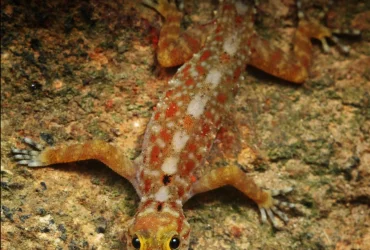 v12i1.295
v12i1.295ISSN: 1800-427X (printed)
eISSN: 1800-427X (online)
DOI:10.47605/tapro.v12i1.295
Submitted date: 18 March 2023
Accepted date: 3 May 2023
Published date: 12 May 2023
Pp. 5–13, pls. 4–6.
A NEW RUPICOLOUS DAY GECKO SPECIES (SQUAMATA: GEKKONIDAE: Cnemaspis) FROM TAMIL NADU, SOUTH INDIA
Amit Sayyed*, Samson Kirubakaran, Rahul Khot, Anbazhagan Abinesh, Shiva Harshan, Ayaan Sayyed, Masum Sayyed, Omkar Adhikari, Jayaditya Purkayastha,
Shubhankar Deshpande & Shauri Sulakhe
*Corresponding author. E-mail: amitsayyedsatara@gmail.com
Abstract
We here describe a new rupicolous day gecko species nested within the C. gracilis clade from Madurai, Tamil Nadu, India. The new species differs with a combination of morphological characters and molecular phylogenetics, from other closely related congeners. The sequence divergence of the new species in comparison with the congeners from the gracilis clade is 6.1–15.2% for the ND2 gene. The new species can also be differentiated from the congeners based on the following combination of morphological characters: conical and spine-like tubercles absent on flanks; adult SVL less than 35.0 mm; two precloacal pores; precloacal pores separated medially by two poreless scales; four femoral pores; number of mid-ventral scales 110–120; and a small black colour spot on the occiput.
Key words : dwarf geckos, [i]gracilis[.i[ clade, molecular phylogeny, ND2, rock-dwelling, systematics
Section Editor: Zeeshan Mirza
LSID:urn:lsid:zoobank.org
eISSN: 1800-427X (online)
DOI:10.47605/tapro.v12i1.295
Submitted date: 18 March 2023
Accepted date: 3 May 2023
Published date: 12 May 2023
Pp. 5–13, pls. 4–6.
A NEW RUPICOLOUS DAY GECKO SPECIES (SQUAMATA: GEKKONIDAE: Cnemaspis) FROM TAMIL NADU, SOUTH INDIA
Amit Sayyed*, Samson Kirubakaran, Rahul Khot, Anbazhagan Abinesh, Shiva Harshan, Ayaan Sayyed, Masum Sayyed, Omkar Adhikari, Jayaditya Purkayastha,
Shubhankar Deshpande & Shauri Sulakhe
*Corresponding author. E-mail: amitsayyedsatara@gmail.com
Abstract
We here describe a new rupicolous day gecko species nested within the C. gracilis clade from Madurai, Tamil Nadu, India. The new species differs with a combination of morphological characters and molecular phylogenetics, from other closely related congeners. The sequence divergence of the new species in comparison with the congeners from the gracilis clade is 6.1–15.2% for the ND2 gene. The new species can also be differentiated from the congeners based on the following combination of morphological characters: conical and spine-like tubercles absent on flanks; adult SVL less than 35.0 mm; two precloacal pores; precloacal pores separated medially by two poreless scales; four femoral pores; number of mid-ventral scales 110–120; and a small black colour spot on the occiput.
Key words : dwarf geckos, [i]gracilis[.i[ clade, molecular phylogeny, ND2, rock-dwelling, systematics
Section Editor: Zeeshan Mirza
LSID:urn:lsid:zoobank.org
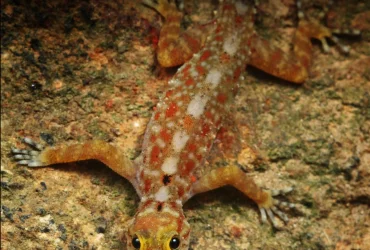 v12i1.294
v12i1.294ISSN: 1800-427X (printed)
eISSN: 1800-427X (online)
DOI:10.47605/tapro.v12i1.294
Submitted date: 10 June 2022
Accepted date: 1 December 2022
Published date: 12 May 2023
Pp. 1–4, pls. 1–3.
DESCRIPTION OF A NEW WOLF SPIDER SPECIES (ARACHNIDA: ARANEAE: LYCOSIDAE: Draposa) FROM WESTERN GHATS, INDIA
Raveendran Sudha Abhijith & Ambalaparambil Vasu Sudhikumar*
*Corresponding author. E-mail: spidersudhi@gmail.com
Abstract
Draposa is a relatively newly described wolf spider genus numbering 11 species, out of which eight have been reported from India. A new Draposa species from Kerala, Western Ghats, India, is described, photographed and illustrated. The male palp of the new species is similar to that of D. lyrivulva distributed in Pakistan, India and Sri Lanka, but it differs by having the following combination of characters: shorter tegular apophysis with a narrow and linear tip, prominent sub-apical protrusion, and embolus parallel to tegular apophysis.
Key words : Arachnida, distribution, Kerala, Pardosa, South Asia, taxonomy
Section Editor: Francesco Ballarin
LSID:urn:lsid:zoobank.org
eISSN: 1800-427X (online)
DOI:10.47605/tapro.v12i1.294
Submitted date: 10 June 2022
Accepted date: 1 December 2022
Published date: 12 May 2023
Pp. 1–4, pls. 1–3.
DESCRIPTION OF A NEW WOLF SPIDER SPECIES (ARACHNIDA: ARANEAE: LYCOSIDAE: Draposa) FROM WESTERN GHATS, INDIA
Raveendran Sudha Abhijith & Ambalaparambil Vasu Sudhikumar*
*Corresponding author. E-mail: spidersudhi@gmail.com
Abstract
Draposa is a relatively newly described wolf spider genus numbering 11 species, out of which eight have been reported from India. A new Draposa species from Kerala, Western Ghats, India, is described, photographed and illustrated. The male palp of the new species is similar to that of D. lyrivulva distributed in Pakistan, India and Sri Lanka, but it differs by having the following combination of characters: shorter tegular apophysis with a narrow and linear tip, prominent sub-apical protrusion, and embolus parallel to tegular apophysis.
Key words : Arachnida, distribution, Kerala, Pardosa, South Asia, taxonomy
Section Editor: Francesco Ballarin
LSID:urn:lsid:zoobank.org
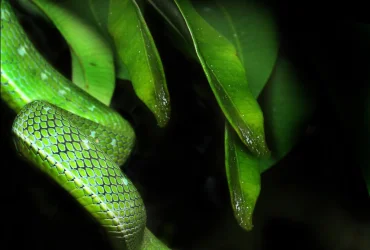 v11i2.293
v11i2.293ISSN: 1800-427X (printed)
eISSN: 1800-427X (online)
DOI:10.47605/tapro.v11i2.293
Submitted date: 28 March 2022
Accepted date: 16 November 2022
Published date: 22 November 2022
Pp. 119–121.
Seaweed (macroalgae) diversity on the Dikwella coast, Southern Sri Lanka
M.L.I. De Silva*, M.S. Gunasinghe, P.H. Liyanagedara, M.A.S. Ranjula, H.M.S.M Herath, N. I. Bamunuarachchi & W.A.A.D.L Wickramasinghe
*Corresponding author. E-mail: ninelawlis1@gmail.com
Seaweeds are photosynthetic and macroscopic eukaryotic organisms found in marine and brackish water environments. They are one of the major primary producers in marine ecosystems. They are also important in maintaining coastal biodiversity by interacting with other organisms. In addition to their biological and ecological importance, seaweeds are economically significant. Data from the Food and Agriculture Organization (FAO) shows that a total of 35 million tonnes of seaweed were produced through cultivation in 2019 and 97% of this was from East Asia. China was ranked as the top producer. In contrast to all the positives, there are a few negative impacts of seaweeds; including biofouling, habitat invasion, and unwanted beach drift.
Section Editor: H.K.S de Zoysa
eISSN: 1800-427X (online)
DOI:10.47605/tapro.v11i2.293
Submitted date: 28 March 2022
Accepted date: 16 November 2022
Published date: 22 November 2022
Pp. 119–121.
Seaweed (macroalgae) diversity on the Dikwella coast, Southern Sri Lanka
M.L.I. De Silva*, M.S. Gunasinghe, P.H. Liyanagedara, M.A.S. Ranjula, H.M.S.M Herath, N. I. Bamunuarachchi & W.A.A.D.L Wickramasinghe
*Corresponding author. E-mail: ninelawlis1@gmail.com
Seaweeds are photosynthetic and macroscopic eukaryotic organisms found in marine and brackish water environments. They are one of the major primary producers in marine ecosystems. They are also important in maintaining coastal biodiversity by interacting with other organisms. In addition to their biological and ecological importance, seaweeds are economically significant. Data from the Food and Agriculture Organization (FAO) shows that a total of 35 million tonnes of seaweed were produced through cultivation in 2019 and 97% of this was from East Asia. China was ranked as the top producer. In contrast to all the positives, there are a few negative impacts of seaweeds; including biofouling, habitat invasion, and unwanted beach drift.
Section Editor: H.K.S de Zoysa
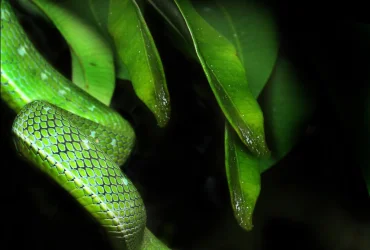 v11i2.292
v11i2.292ISSN: 1800-427X (printed)
eISSN: 1800-427X (online)
DOI:10.47605/tapro.v11i2.292
Submitted date: 30 January 2022
Accepted date: 30 October 2022
Published date: 22 November 2022
Pp. 114–118, Pls. 35–36.
On the critically endangered red teruntum mangrove (Lumnitzera littorea)
S. Madhushanka*, K.B. Ranawana & M. Prassanna
*Corresponding author. E-mail: shashimadhushanka2@gmail.com
Mangroves are ecologically important forest communities along tropical and subtropical coasts with 70 woody species belonging to about 30 genera in 20 families. Lumnitzera littorea (Jack) Voigt of the Family Combretaceae is a critically endangered true mangrove species indigenous to Sri Lanka. This species is distributed widely on the east coast of Africa, northern Australia, Polynesia, and tropical Asian countries. It is only known from a few locations in Sri Lanka. Therefore, in Sri Lanka L. littorea has been identified as a critically endangered (CR) species in 2007, 2012, and 2020 National Red Lists.
Section Editor: Jean W.H. Yong
eISSN: 1800-427X (online)
DOI:10.47605/tapro.v11i2.292
Submitted date: 30 January 2022
Accepted date: 30 October 2022
Published date: 22 November 2022
Pp. 114–118, Pls. 35–36.
On the critically endangered red teruntum mangrove (Lumnitzera littorea)
S. Madhushanka*, K.B. Ranawana & M. Prassanna
*Corresponding author. E-mail: shashimadhushanka2@gmail.com
Mangroves are ecologically important forest communities along tropical and subtropical coasts with 70 woody species belonging to about 30 genera in 20 families. Lumnitzera littorea (Jack) Voigt of the Family Combretaceae is a critically endangered true mangrove species indigenous to Sri Lanka. This species is distributed widely on the east coast of Africa, northern Australia, Polynesia, and tropical Asian countries. It is only known from a few locations in Sri Lanka. Therefore, in Sri Lanka L. littorea has been identified as a critically endangered (CR) species in 2007, 2012, and 2020 National Red Lists.
Section Editor: Jean W.H. Yong
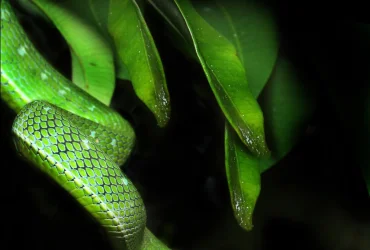 v11i2.291
v11i2.291ISSN: 1800-427X (printed)
eISSN: 1800-427X (online)
DOI:10.47605/tapro.v11i2.291
Submitted date: 9 May 2022
Accepted date: 30 October 2022
Published date: 22 November 2022
Pp. 111–113.
Scent rubbing in carnivore species at Gavier Lake, Gujarat, India
K. Trivedi*, C. Patel & A. Desai
*Corresponding author. E-mail: krunal.trivedi.7567@gmail.com
Scents are one of the most common means of animal communication. Some animals use scent communication for many purposes including determining age and sex, marking their territories, and finding mates. Scent rubbing is a poorly understood way of marking in which animals rub their bodies against a variety of surfaces, many of which have intense odours. Individuals collapse their forelegs then push forward with their hind legs, rubbing their face, neck, and back onto the destination of the scent in the most well-known occurrences among carnivores. Most commonly, they put their own scent on the object while infusing the object’s scents onto their bodies. Faeces of other animals, meat, intestinal contents and insecticide are among the substances that elicit scent-rubbing. As a result, the subject's pelages are infused with the odour of these substances. Odours produced by sweat glands, urine, faeces and vaginal secretions often induce this behaviour, which is prominent in carnivore species. They scent rub as an olfactory communication method, releasing chemical odours to increase the chances of being recognised by conspecifics. Canids and other carnivores are well known for rubbing themselves on various scents, while smaller carnivores have been shown to increase caution and alter their feeding behaviour when exposed to the scent of larger carnivores .
Section Editor: Lee Harding
eISSN: 1800-427X (online)
DOI:10.47605/tapro.v11i2.291
Submitted date: 9 May 2022
Accepted date: 30 October 2022
Published date: 22 November 2022
Pp. 111–113.
Scent rubbing in carnivore species at Gavier Lake, Gujarat, India
K. Trivedi*, C. Patel & A. Desai
*Corresponding author. E-mail: krunal.trivedi.7567@gmail.com
Scents are one of the most common means of animal communication. Some animals use scent communication for many purposes including determining age and sex, marking their territories, and finding mates. Scent rubbing is a poorly understood way of marking in which animals rub their bodies against a variety of surfaces, many of which have intense odours. Individuals collapse their forelegs then push forward with their hind legs, rubbing their face, neck, and back onto the destination of the scent in the most well-known occurrences among carnivores. Most commonly, they put their own scent on the object while infusing the object’s scents onto their bodies. Faeces of other animals, meat, intestinal contents and insecticide are among the substances that elicit scent-rubbing. As a result, the subject's pelages are infused with the odour of these substances. Odours produced by sweat glands, urine, faeces and vaginal secretions often induce this behaviour, which is prominent in carnivore species. They scent rub as an olfactory communication method, releasing chemical odours to increase the chances of being recognised by conspecifics. Canids and other carnivores are well known for rubbing themselves on various scents, while smaller carnivores have been shown to increase caution and alter their feeding behaviour when exposed to the scent of larger carnivores .
Section Editor: Lee Harding
Hubungi Kami
The ultimate aim of the journal is to provide an effective medium for communication of the latest and best scientific information.
Copyright © 2020 Taprobanica. All Rights Reserved
Jasa Pembuatan Website by IKT




